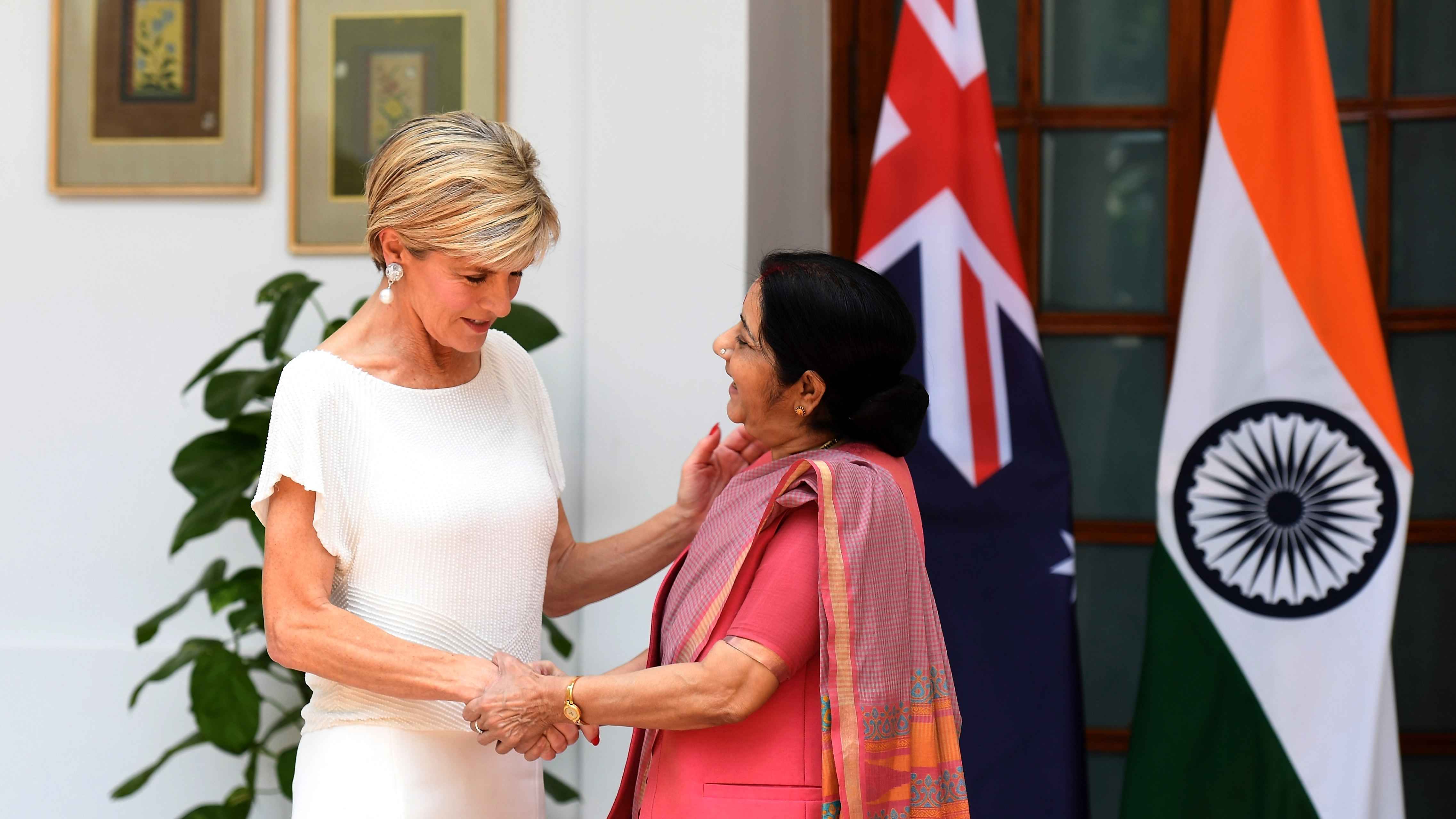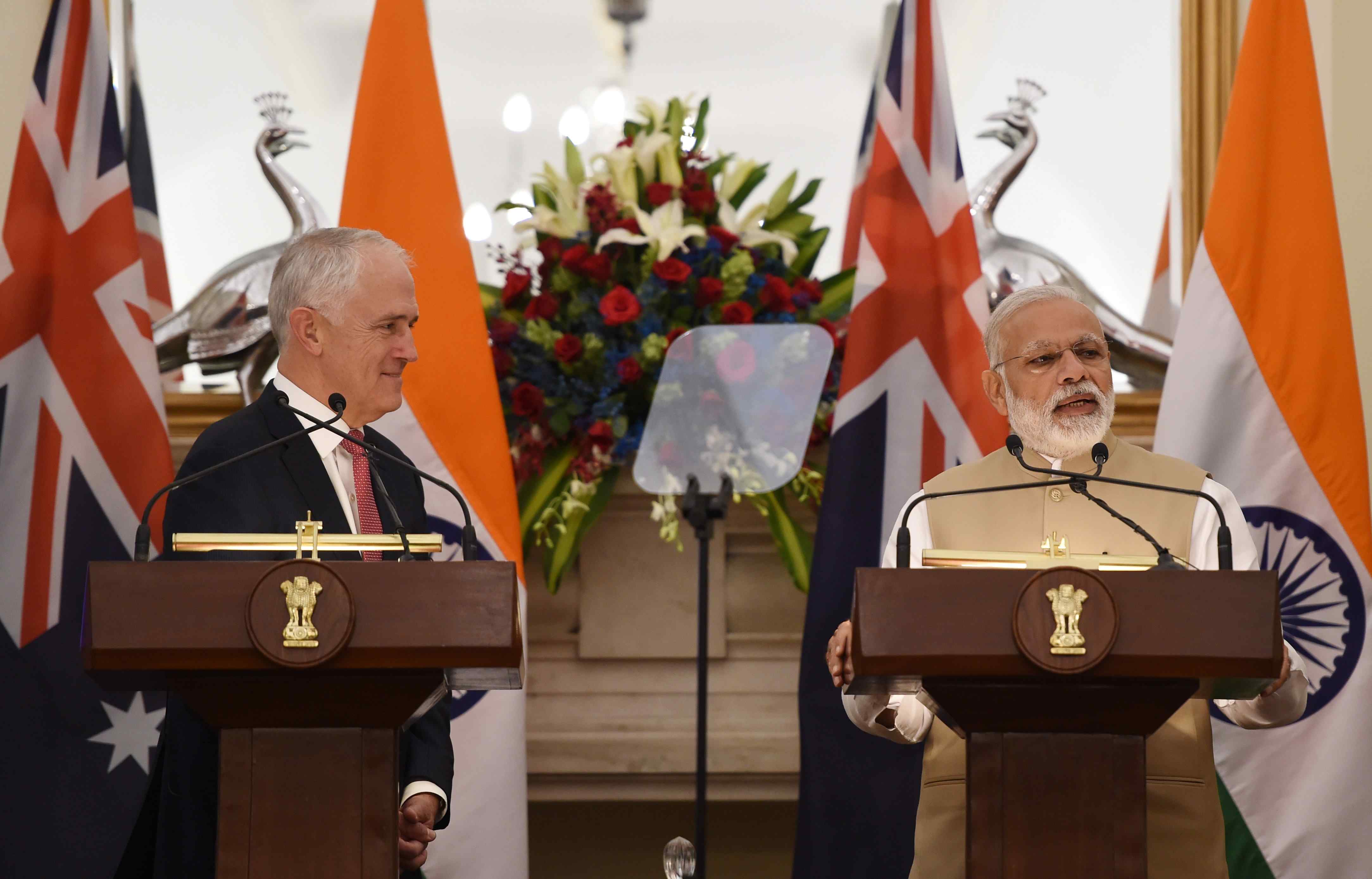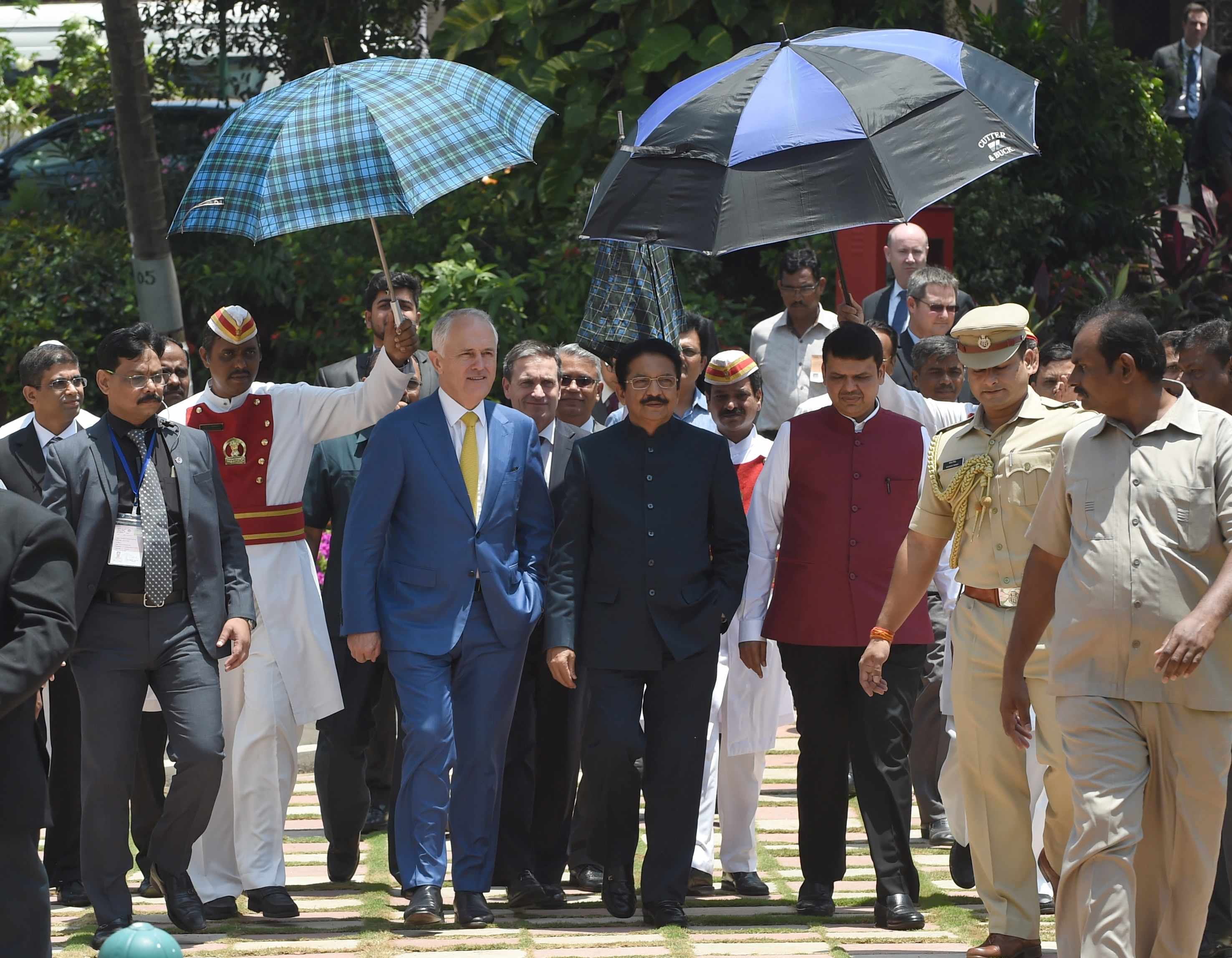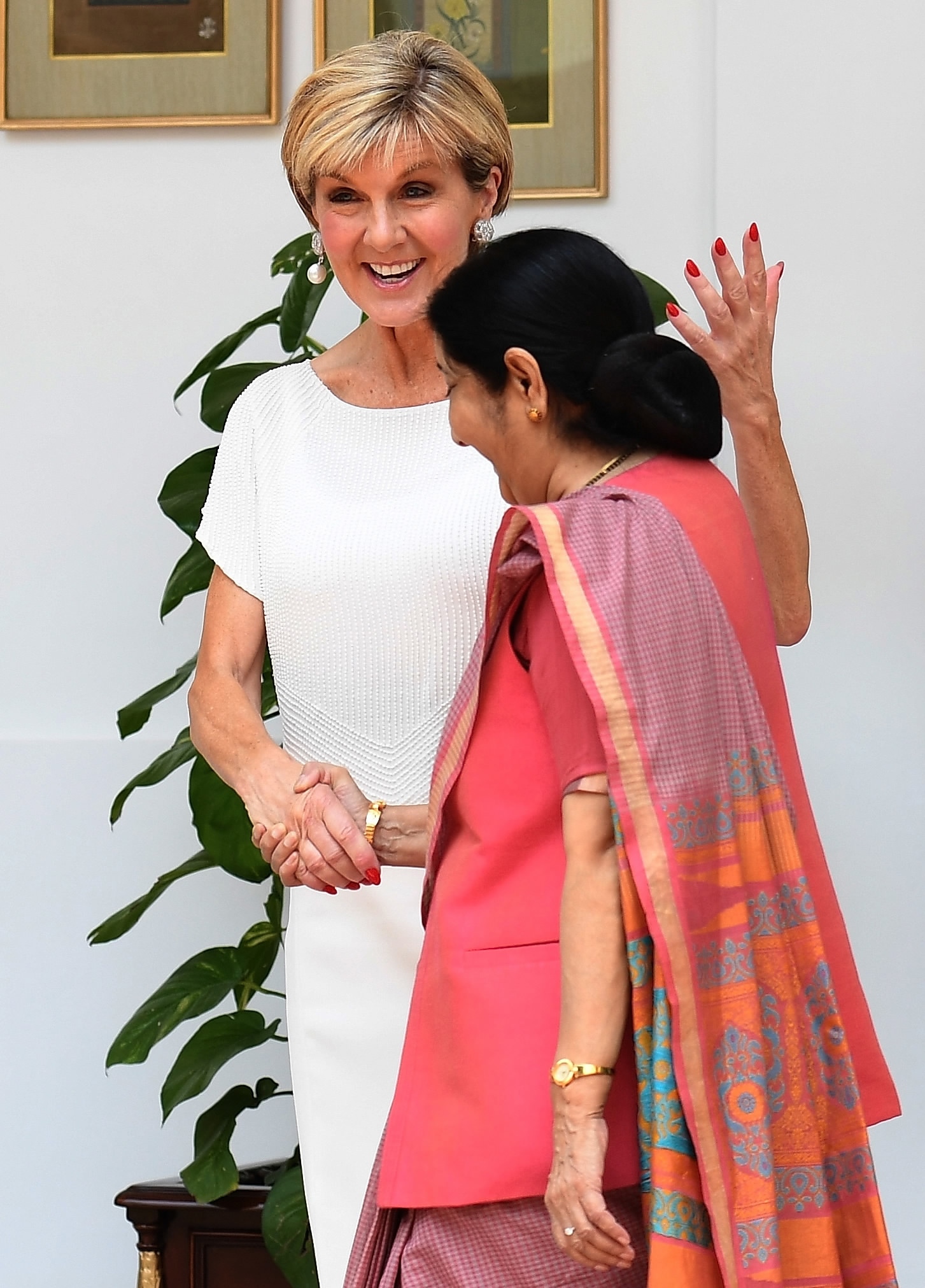
Politics
14:51, 02-Aug-2017
Opinion: How close can the relationship between Australia and India become?

By Qu Caiyun in Global Times
Australia and India are both Commonwealth countries sharing the British legacy of democracy, but they have long had weak and aloof ties.
After the Cold War, Australia started to approach India to warm ties, but India's nuclear tests sent bilateral ties to rock bottom.
During the 21st century, the two countries have gradually moved closer due to changes in the Asia-Pacific situation and their strategic objectives.
The Australia-India relationship continues to warm up this year. After Prime Minister Malcolm Turnbull's visit to India in April, Australian Foreign Minister Julie Bishop visited India and brought the first shipment of uranium.
Her visit to India amid a China-India border standoff not only reveals Australia's intention of cozying up to India, but also Australia's purposes ahead.

Indian Prime Minister Narendra Modi (R) speaks as Australian Prime Minister Malcolm Turnbull looks on during a joint press briefing in New Delhi on April 10, 2017. / AFP Photo
Indian Prime Minister Narendra Modi (R) speaks as Australian Prime Minister Malcolm Turnbull looks on during a joint press briefing in New Delhi on April 10, 2017. / AFP Photo
First, Australia wants to deepen cooperation in security and defense with India. Security cooperation started late between Australia and India. In 2006, a memorandum of understanding on defense cooperation was signed. In 2009, the two countries committed to a joint declaration on security cooperation and pledged to build a bilateral security cooperation framework.
Security cooperation, however, has proceeded quite slowly. In 2014, Australia and India signed a new security cooperation framework and decided to hold defense ministers' meetings and joint military exercises regularly, and enhance defense exchanges and maritime security cooperation to materialize bilateral security cooperation. Bishop reiterated during her visit willingness to deepen and expand cooperation in security and defense.
Second, Australia aims to boost economic and trade cooperation, especially to speed up negotiations over a comprehensive economic cooperation agreement. The Indian economy maintains robustness despite a general slowdown in global economic growth, thus India is undoubtedly an important partner for Australia.
The two signed an economic cooperation framework agreement in 2006 to boost cooperation. But bilateral trade only takes up a small share of their foreign trade. They started the negotiations on a comprehensive economic cooperation agreement in 2011 to deepen trade ties. But negotiations went poorly and no deal was reached.
Turnbull visited India hoping that an agreement would be sealed, but was left disappointed. Bishop hoped to gain concessions from India and push negotiations forward.

Australian Prime Minister Malcolm Turnbull (C-L) walks with the Indian Governor of the state of Maharashtra Ch. Vidyasagar Rao (C-R) during a tour of the Governor House in Mumbai on April 12, 2017. / AFP Photo
Australian Prime Minister Malcolm Turnbull (C-L) walks with the Indian Governor of the state of Maharashtra Ch. Vidyasagar Rao (C-R) during a tour of the Governor House in Mumbai on April 12, 2017. / AFP Photo
Third, Australia aims to counterbalance China with India to build a rules-based regional order. Though China is Australia's largest trading partner, Australia never lets its guard down against the rise of China.
India, a power that has border issues with China and is wary of China's rising power, is an important partner for the US, Australia and Japan to counterbalance China. While stepping up cooperation with the US and Japan, Australia is making efforts to woo India. The US, Australia and Japan tend to unite against China and exacerbate the state of affairs in regions such as the East or South China Sea.
Fourth, Australia aims to enhance cooperation with India in the Indo-Pacific region to strengthen Australia's presence and influence in the regional landscape. Australia has embraced its identity as an Asia-Pacific country and played an active part in Asian affairs since the 1990s.
But integration with Asia is not smooth, because Australia is used to dealing with Western countries. Australia was called a "torn country" - a Western civilization trying to turn itself into an Asian nation, by scholar Samuel Huntington in Clash of Civilizations.

Australian Foreign Minister Julie Bishop (L) shakes hands with Indian Foreign Minister Sushama Swaraj ahead of a meeting in New Delhi on July 18, 2017. The Australian Foreign Minister is on a two-day official visit to India. / AFP Photo
Australian Foreign Minister Julie Bishop (L) shakes hands with Indian Foreign Minister Sushama Swaraj ahead of a meeting in New Delhi on July 18, 2017. The Australian Foreign Minister is on a two-day official visit to India. / AFP Photo
Closer cooperation with big powers in the region - the US, China, Japan and India - is a path to find its place in the Asia-Pacific, get involved with regional affairs, upgrade its influence and to become "a moderately strong country."
So Australia seeks more cooperation with Japan and India to strengthen its strategic presence in East Asia and the Indian Ocean while gaining from alliance with the US. Australia is adopting a more flexible and dynamic diplomatic posture in the Indo-Pacific to gain more from regional economic growth and the changing regional situation.
Enhanced cooperation with India will not only upgrade bilateral ties but also promote strategic cooperation among the US, Japan, Australia and India, for Austria and India are important links in the diamond alliance.
There are also conflicts of interest between Australia and India as New Delhi focuses on shaping a regional strategic balance, and realizing its dream of becoming a major power through nimbly adjusting its alliances with big and regional powers. Australia and India, which have different goals, may see further changes in their partnership.
(The author is an assistant research fellow with the Institute of Asia-Pacific and Global Strategy, Chinese Academy of Social Sciences. The article reflects the author's opinion, not necessarily the view of CGTN.)
Related stories:

SITEMAP
Copyright © 2018 CGTN. Beijing ICP prepared NO.16065310-3
Copyright © 2018 CGTN. Beijing ICP prepared NO.16065310-3